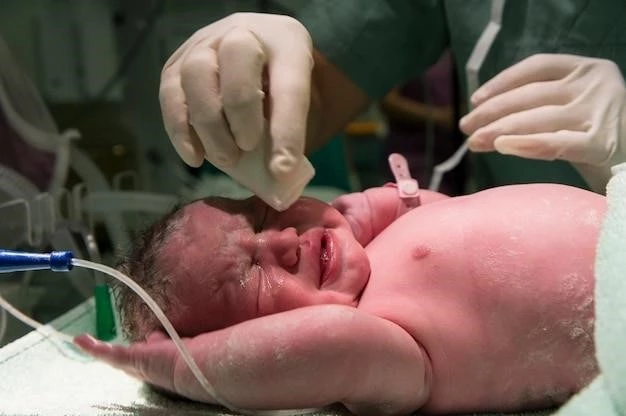Introduction
Periventricular leukomalacia (PVL) is a common brain injury in preterm infants, characterized by focal necrosis and softening of the periventricular white matter. It is a major cause of cerebral palsy in preterm infants.
Definition and Overview
Periventricular leukomalacia (PVL) is a common brain injury in premature infants characterized by the death and softening of the brain’s white matter, particularly around the ventricles. This condition, often associated with cerebral palsy, results from a lack of oxygen or blood flow to the periventricular region, leading to the formation of cysts or holes in the brain tissue. PVL is frequently diagnosed using magnetic resonance imaging (MRI) and is more prevalent in premature infants than term infants;

Epidemiology of Periventricular Leukomalacia
Periventricular leukomalacia is a common brain injury in premature infants, often leading to cerebral palsy. It is more prevalent in premature infants than term infants, frequently diagnosed using MRI.
Incidence and Prevalence
Periventricular leukomalacia (PVL) is a common brain injury in premature infants, often leading to cerebral palsy. It is more prevalent in premature infants than term infants, with the incidence varying based on factors like gestational age and specific risk factors.
Causes of Periventricular Leukomalacia
Periventricular leukomalacia (PVL) in premature infants is primarily caused by insufficient oxygen or blood flow to the periventricular white matter, leading to brain tissue softening and damage. The condition often results from complications of premature birth.
Risk Factors
Risk factors associated with periventricular leukomalacia (PVL) include prematurity, low birth weight, maternal infection, and oxygen deprivation during birth. Other risks may include gestational age, multiple births, and respiratory distress syndrome.
Symptoms and Clinical Presentation
The symptoms of periventricular leukomalacia (PVL) can vary, but common signs include muscle stiffness, developmental delays, vision and hearing problems, and cognitive impairments. Early diagnosis and intervention are crucial for managing these symptoms effectively.
Signs to Look for
Recognizing periventricular leukomalacia (PVL) may involve observing symptoms such as muscle stiffness, delayed developmental milestones, vision or hearing impairments, and cognitive challenges in affected infants. While the signs can vary, early detection is essential for optimal management of the condition.

Diagnosis of Periventricular Leukomalacia
Diagnosing periventricular leukomalacia (PVL) typically involves imaging techniques such as magnetic resonance imaging (MRI) to assess white matter abnormalities in the brain. Early detection through these diagnostic tools is crucial for timely intervention.
Diagnostic Tools and Tests
Periventricular leukomalacia (PVL) is commonly diagnosed using imaging techniques such as ultrasound or magnetic resonance imaging (MRI). These tools can help identify white matter abnormalities and areas of softening in the brain, aiding in the accurate diagnosis of PVL in affected individuals.
Pathophysiology of Periventricular Leukomalacia
Periventricular leukomalacia (PVL) involves the necrosis and softening of the white matter near the ventricles of the brain. The condition typically presents with cavitation and cyst formation, impacting premature infants more than term infants due to factors like hypoxia-ischemia.
Underlying Mechanisms
Periventricular leukomalacia (PVL) in premature infants involves necrosis and gliosis of the white matter near the ventricles, impacting brain development. The condition often arises from factors like hypoxia-ischemia and is closely linked to the development of cerebral palsy.
Treatment and Management of Periventricular Leukomalacia
Treatment of periventricular leukomalacia (PVL) in premature infants typically focuses on supportive care, physical therapy, occupational therapy, and early intervention services to address developmental delays and manage associated conditions. Close monitoring and a multidisciplinary approach are essential in the management of PVL.
Therapeutic Approaches
Managing periventricular leukomalacia (PVL) often involves supportive care, physical therapy, and early intervention services catering to the developmental needs of affected infants. Multidisciplinary interventions may be employed to address motor difficulties, cognitive impairments, and other challenges associated with PVL.
Complications Associated with Periventricular Leukomalacia
Complications of periventricular leukomalacia (PVL) in premature infants may include cerebral palsy, motor impairments, cognitive challenges, and developmental delays. Early intervention and multidisciplinary care are essential for managing these complications effectively.
Potential Risks
There are potential risks associated with periventricular leukomalacia (PVL) in premature infants, including the development of cerebral palsy, motor impairments, cognitive challenges, and developmental delays. It is crucial to closely monitor and provide appropriate interventions to minimize these risks and optimize outcomes for affected individuals.
Prognosis and Outcomes
The prognosis for individuals with periventricular leukomalacia (PVL) depends on the severity of brain damage and associated complications. While some may experience motor impairments, cognitive challenges, and developmental delays, others may have better outcomes with early intervention and comprehensive care. Long-term effects may vary based on the extent of brain injury and individual response to treatment.
Long-Term Effects
Periventricular leukomalacia (PVL) in premature infants can have long-term effects, potentially leading to conditions like cerebral palsy, motor impairments, cognitive challenges, and developmental delays. The severity of these effects may vary depending on the extent of brain damage and the effectiveness of early interventions and comprehensive care.
Prevention Strategies for Periventricular Leukomalacia
Preventing periventricular leukomalacia (PVL) in premature infants may involve strategies such as optimizing prenatal care, addressing maternal infections, ensuring proper oxygenation during birth, and providing appropriate neonatal care. Early identification and management of risk factors are crucial in reducing the incidence of PVL.
Preventive Measures
To prevent periventricular leukomalacia (PVL) in premature infants, healthcare providers may focus on optimizing prenatal care, managing maternal infections, ensuring adequate oxygenation during birth, and providing appropriate neonatal care. These measures aim to reduce the risk factors associated with PVL and promote better outcomes for at-risk infants.
Research and Advancements in Periventricular Leukomalacia
Researchers are continuously investigating periventricular leukomalacia (PVL) to enhance understanding and develop innovative treatment approaches. Advancements in imaging techniques, neuroprotective strategies, and early intervention protocols aim to improve outcomes for infants affected by PVL. Ongoing studies are crucial for advancing knowledge and enhancing therapeutic interventions in the management of this condition.
Current Studies and Innovations
Current research on periventricular leukomalacia (PVL) focuses on innovative imaging techniques, neuroprotective strategies, and novel therapeutic interventions to improve outcomes for affected infants. Ongoing studies aim to enhance understanding of the condition and develop more effective treatment options, thereby advancing care for infants at risk of PVL.
Support and Resources for Individuals with Periventricular Leukomalacia
For individuals with periventricular leukomalacia (PVL), access to support and resources can significantly impact their care and quality of life. Organizations specializing in neurological disorders, developmental delays, and cerebral palsy can offer valuable assistance and guidance to affected individuals and their families. Seeking help from these organizations can provide access to information, support groups, therapeutic services, and educational resources to navigate the challenges associated with PVL.
Helpful Organizations and Assistance
Organizations specializing in neurological disorders, developmental delays, and cerebral palsy offer valuable support and resources for individuals with periventricular leukomalacia. These organizations provide information, support groups, therapeutic services, and educational resources to help affected individuals and their families navigate the challenges associated with periventricular leukomalacia.
